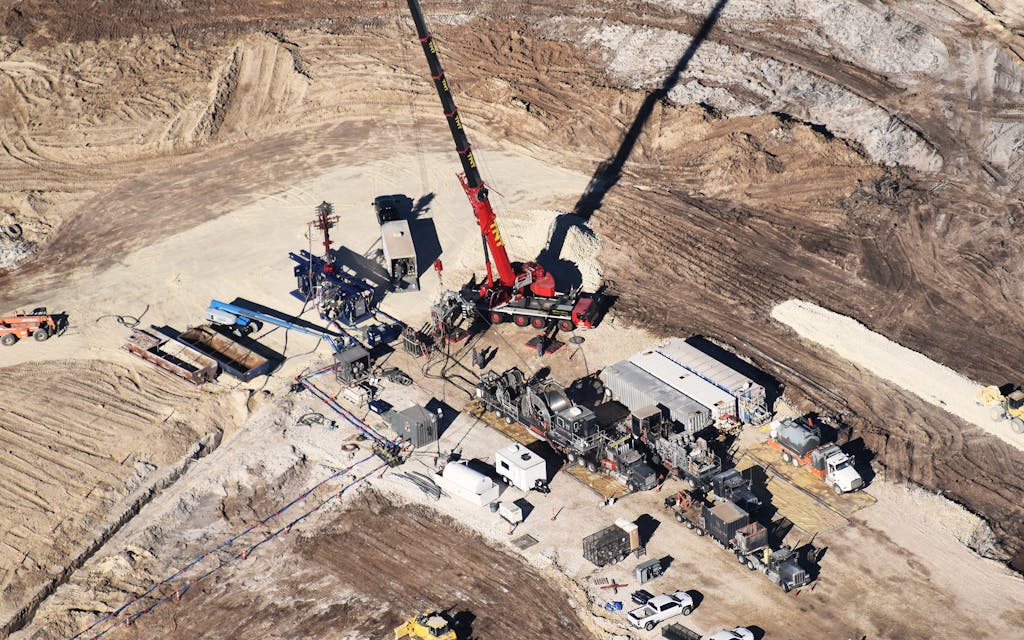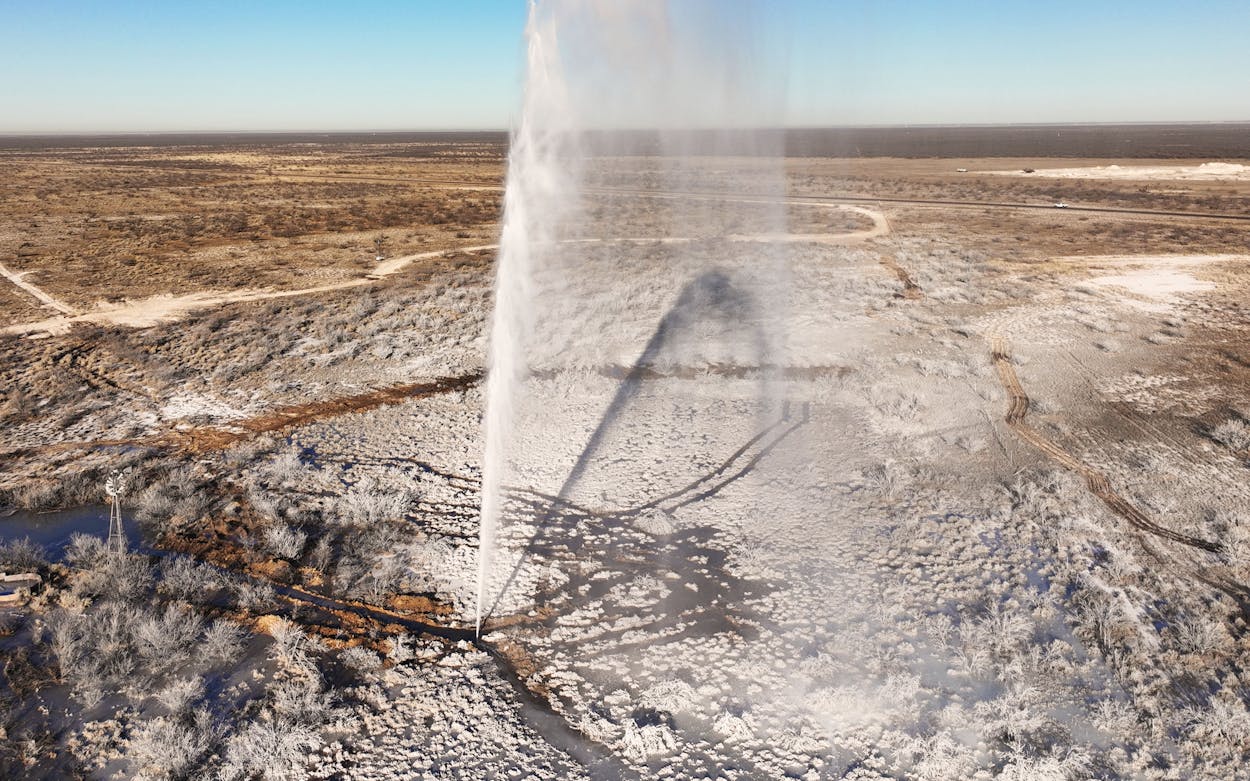Paging Walker, Texas Ranger. Alert Nancy Drew, Hercule Poirot, and (shudder) M. Emmet Walsh’s ruthless private eye from Blood Simple. We have a full-fledged Texas mystery on our hands. Call it the Case of the Undocumented Oil Well.
Around New Year’s Eve, a well on a ranch in southern Crane County roared to life. It blew 25,000 barrels a day of briny water one hundred feet into the air. By itself, this was odd. There is no known high-pressure zone of salty water out there, at least none that exists naturally.
Was it a plugged and abandoned oil well? An old water well? There was nothing in the state’s mapping system to indicate there was a well there. On January 10, private researchers spelunking through archives found a record of a 1948 well drilled by Gulf Oil called the CT 112. It was a 1,390-foot dry hole that was plugged in 1957. Because Chevron had acquired Gulf in the years since and assumed liability for its plugged wells, Chevron took command of the scene and brought the geyser under control on Monday of this week.
And that’s when the mystery deepened. While excavating around the blown-out well, Chevron found a second well twenty feet away. Based on the number and diameter of the steel pipes in the well, the second well appears to be the CT 112. That means the blowout was coming from an unknown well, of an unknown depth, and belonging to an unknown owner. “We’ve had people scouring all of our records and we cannot find, to date, a record,” says Dennis McHugh, Chevron’s general manager of wells in the Permian Basin. “We don’t know. It’s a mystery for us.”

There should be a record of this well, but there isn’t. In 1931, the Texas Railroad Commission issued an order requiring royalty owners to produce records of all wells in the giant East Texas oil field around Kilgore. Since then, the agency has tracked and recorded well locations throughout the state. That’s important for making sure royalty owners get paid and wells are properly cared for and plugged when no longer in use. (McHugh said the design of the newly discovered well suggests it may be from the 1970s or 1980s.)
If there’s one lost mystery well out there that was suddenly resurrected, could there be others? “It is clear that the Railroad Commission doesn’t have a good handle on how to monitor wells in perpetuity, nor does it have the funds to do so,” says Virginia Palacios, executive director of Commission Shift, a nonprofit watchdog that advocates for reforming Texas’s oil and gas oversight.
The state currently spends about $53 million a year on orphaned wells, but the $1 trillion federal infrastructure bill signed into law late last year has $4.7 billion allocated for “well site plugging, remediation, and restoration activities.” And in December, the Texas Railroad Commission applied for $481.2 million of that funding to plug nearly 7,400 orphaned wells and clean up the areas around old wells. “We don’t know what we don’t know,” says railroad commissioner Jim Wright, a Republican and rancher from South Texas elected in 2020, when asked about how many of these undocumented wells there might be. He adds that the state agency’s collection of data has improved dramatically. “I would caution against any overreaction regarding plugging failures,” he says, noting that he expects the problem that led to a geyser was site specific, not endemic to the West Texas oil fields.
For now, Chevron says it will keep paying for the operations on the cattle ranch in Crane County where the blowout happened—even though it is no longer clear whether it’s a Chevron well. Chevron has installed a large blowout preventer over the well that has kept water from flowing to the surface, but water may still be flowing underground from a high-pressure zone to a lower-pressure zone. Still ahead is figuring out what is going on underground to cause such an eruption, and whether decades’ worth of nearby oil field activity played a role in it. Chevron plans to clean out the wellbore with coil tubing and then lower testing equipment down the hole.
Still, given that an undocumented well appeared out of nowhere, is causing problems, and no one knows who drilled it, does prompt a question: It’s 2022, Texas, do you know where your wells are?
- More About:
- Energy
- Business
- West Texas








